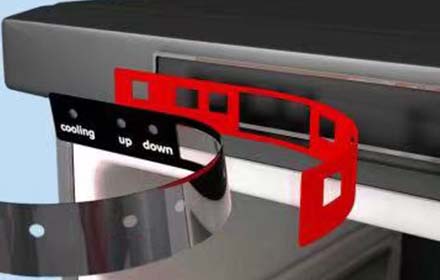
Foam tape has become a widely used and indispensable material in various industries due to its unique combination of adhesive performance and cushioning ability. Initially used for simple adhesive applications, foam tape has evolved into a multi-purpose material that can meet a wide range of needs, from sealing and insulation to shock absorption and protection of precision parts. This transformation not only reflects technological advancements but also meets the market's demand for multifunctional materials. This article will explore the versatility of foam tape and how it has adapted to and driven the development of various industries.
Foam tape was initially widely used as a simple adhesive material. It consists of a soft foam substrate and a layer of pressure-sensitive adhesive, featuring good adhesion, flexibility, and sealing properties. These basic characteristics enable foam tape to play an important role in various applications.
Installation and Fixation of Components
Foam tape is an ideal choice for installing and fixing components in the electronics, automotive, and construction industries. It provides strong adhesive force, can withstand pressure and environmental factors, ensuring that parts remain firmly connected.
Gap Filling
Foam tape can conform to irregular surfaces, making it ideal for filling gaps and uneven spaces. This application is particularly useful in construction, where it helps to form an airtight seal and prevent ventilation.
Enhanced Sealing Performance
As one of the most typical type of industrial adhesive tapes, foam tape can provide airtight and watertight seals, which is particularly important in construction and automotive manufacturing, effectively preventing the penetration of moisture and gases.
Buffering and Shock Absorption
Due to the elasticity of the foam substrate, foam tape serves as a cushioning material in packaging and transportation, protecting fragile items from impact and vibration.
Protection of Precision Parts
The wholesale foam tape can act as a protective pad for precision parts, shielding them from impact and wear. This application is common in electronic products, where foam tape can protect sensitive components from damage during assembly and transport. It is also used to line edges and cover sharp surfaces to prevent injury and abrasion.
Weatherproofing
In outdoor applications, foam tape is an effective weatherproofing material. It can be used to seal joints in roofs, wall panels, and other external structures, preventing water infiltration and protecting against harsh weather conditions.
Market Demand
As consumers' performance requirements for products increase, the versatility of foam tape has become key to meeting these demands.
Environmental Trend
The trend towards environmentally friendly materials has prompted manufacturers to develop recyclable or biodegradable foam tape to reduce environmental impact.
Safety and Compliance
Foam tape has also made corresponding improvements to meet various safety standards and regulatory requirements, such as enhancing temperature resistance and reducing the release of harmful substances.
The versatility of foam tape is key to its continuous development. It is no longer just a simple adhesive material but has become a high-performance material that can adapt to various industrial needs. With ongoing technological advancements and market changes, the applications of foam tape will become more extensive, and its role in enhancing product performance, meeting environmental requirements, and ensuring safety will become increasingly important.